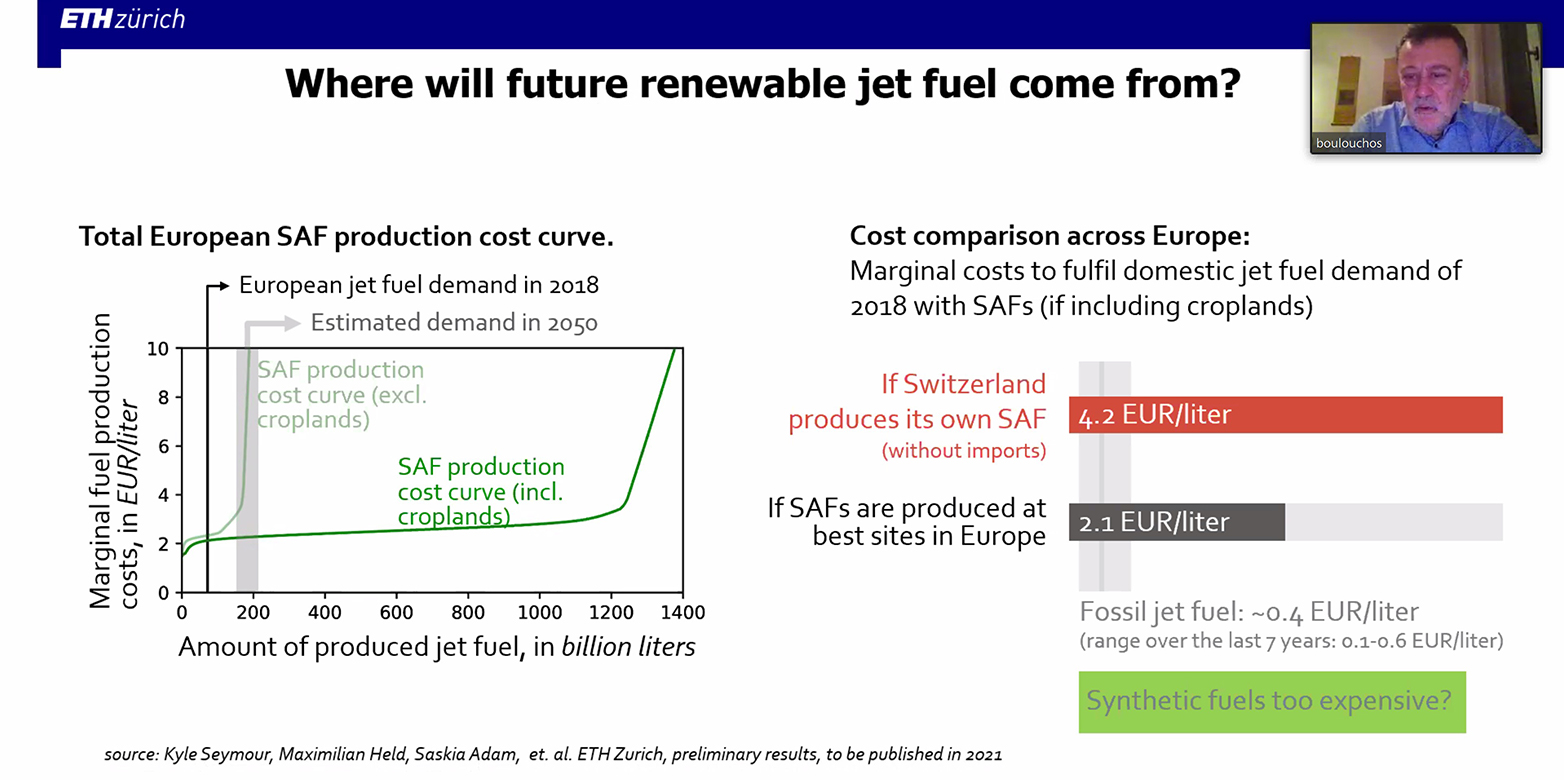Towards a "net-zero" Mobility Future – A systems point of view
What does our mobility look like at the moment? Which modes of transport are we using? What are the most important energy carriers? Where should we produce the energy needed for Net-Zero Mobility? Prof. Konstantinos Boulouchos from the D-MAVT's Institute of Energy and Process Engineering addressed all these questions to shed light on the overarching question of how to govern the transition towards a "net-zero" mobility future.

by Andreas Felderer
In Switzerland, there are large turnovers (120 bn CHF w/o aviation in 2018), many jobs (270 000, i.e., 6% of all swiss jobs in 2018) but also a major share of CO2 emissions (48% off all swiss CO2 emissions in 2018 including international aviation) associated with the mobility sector. What is interesting about these numbers is that the CO2 emissions stayed more or less constant over the last 30 years, while GDP and the resident population grew by 56% and 27%, respectively. Thus a partial decoupling of GDP / population growth and CO2 emissions has already taken place.

Looking at different transport sector shares, Prof. Boulouchos pointed out that policymakers often overlook long-haul heavy-duty transport. However, it is responsible for roughly 9% of mobility-associated CO2 emissions in Switzerland (similar shares apply to the EU) and should be considered in any major policy change.
While engineers take modal choices as given parameters, looking at CO2 emissions is very important and could lead to up to 30% emission reductions (e.g., using SBB’s Green Class. It should be mentioned here that while technically possible, SBB Green Class is also very expensive). Also, car sharing can reduce emissions, battery capacity, and cost of cars, thus reducing the climate impact (however, rebound effects could weaken these effects).
Finally, looking at aviation, Prof. Boulouchos explained two important aspects that should be considered when thinking about decarbonizing aviation: First, 63% of all swiss flights are shorter than 1000 km and account together for only 19% of aviation-related CO2 emissions. Second, while electrifying these short-distance flights might be possible, and it might seem the right thing to do, this would come with huge resource usage. Batteries would have to be replaced very frequently as airplanes on short-distance routes are in heavy use (6-8 flights per day), and batteries can only be recharged a limited number of times.
Altogether, these examples show that a pure engineering perspective (trying to optimize technologies for efficiency and/or CO2 neutrality) will not be enough to decarbonize mobility effectively.

As pointed out with the example of short-distance flights, batteries as energy carriers will not always be the best choice. The two main alternative energy carriers are synthetic fuels and hydrogen. Looking at energy carriers from an engineering point, forecasts indicate that all technologies will be able to compete in terms of the order of the magnitude of efficiencies. However, such forecasts come with large uncertainty, and business aspects might heavily influence which technology will gain the largest market shares.
Looking at, e.g., synthetic fuels to replace kerosene in aviation, prices at the moment are around 0.4 CHF per liter of kerosene and 2.1CHF per liter of synthetic jet fuel. With such a large price difference, a fast transition to synthetic fuels will require engineering efforts (to reduce the price of synthetic fuel) and change business incentives (e.g., taxing kerosene). Thus policy interventions are needed to speed up and guide this transition.

In all the previous considerations, the tacit assumption of CO2 neutral primary electricity was made. However, CO2 neutral electricity generation in itself is a major problem from a technology perspective and a policy point of view. Finding and using suitable locations for renewable energy production will be an important step in the energy transition.
For example, producing all the energy needed for swiss mobility trough PV modules installed in Switzerland would require installing additional modules with a peak capacity of about 80 GW, while producing the same energy in favorable locations outside of Switzerland would only require about 37 GW of PV modules or even only 17GW of offshore WInd capacity. This example illustrates how important the location of production can be for the energy transition. While being independent of energy imports will always be an important factor in energy policy, states will have to think about the price they are willing to pay for being independent of energy imports.

Summing up, it becomes apparent that the complexity of the transition towards net-zero mobility can only be understood by taking a systems point of view. Furthermore, many aspects and interactions (especially policy and societal ones) could only be touched upon in this talk due to time restrictions. This leaves us with an outlook to an exciting but highly uncertain transitional period during which (according to the speaker) strong policy signals will be important to guide the path towards net-zero mobility.

We want to warmly thank Prof. Boulouchos for pointing out the large societal and policy challenges that we will face during this transition while still giving many details on the story's engineering side in his talk.